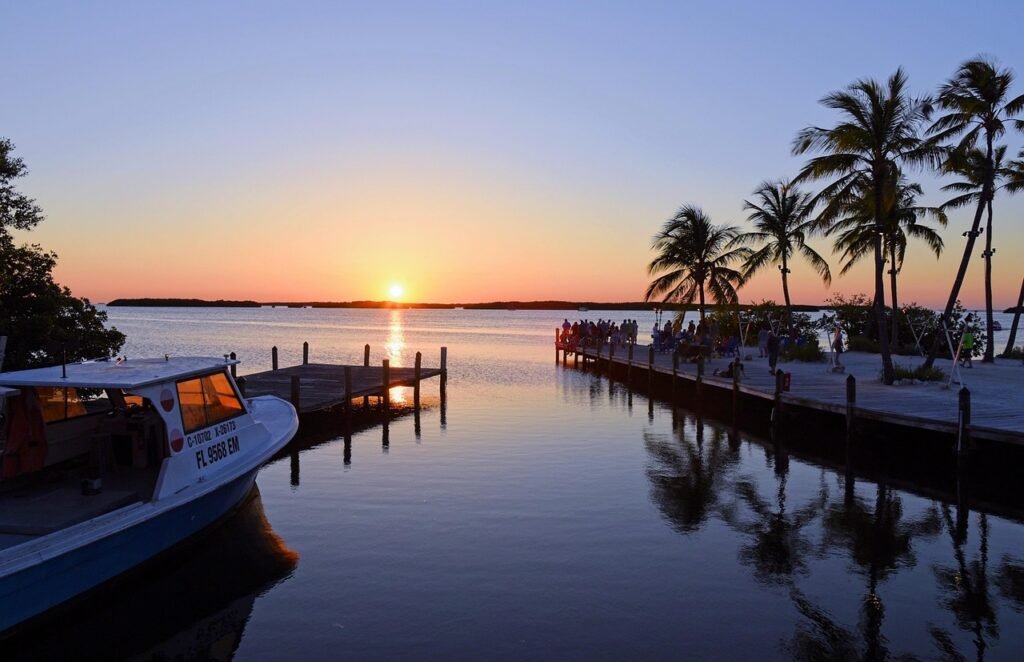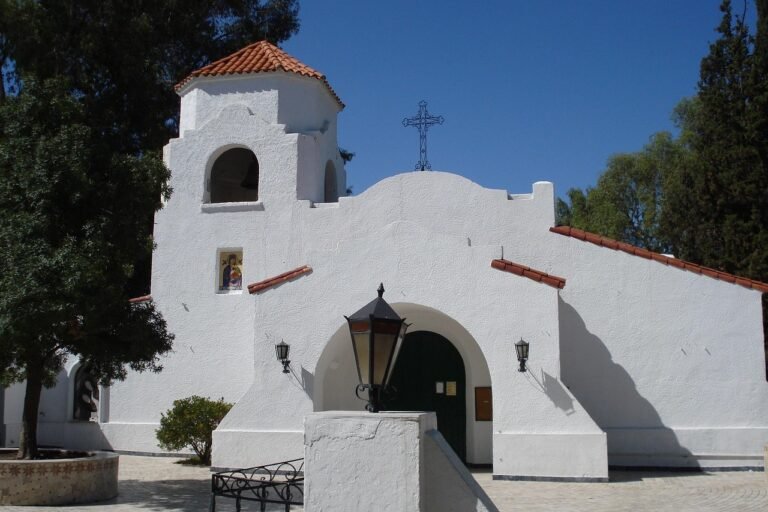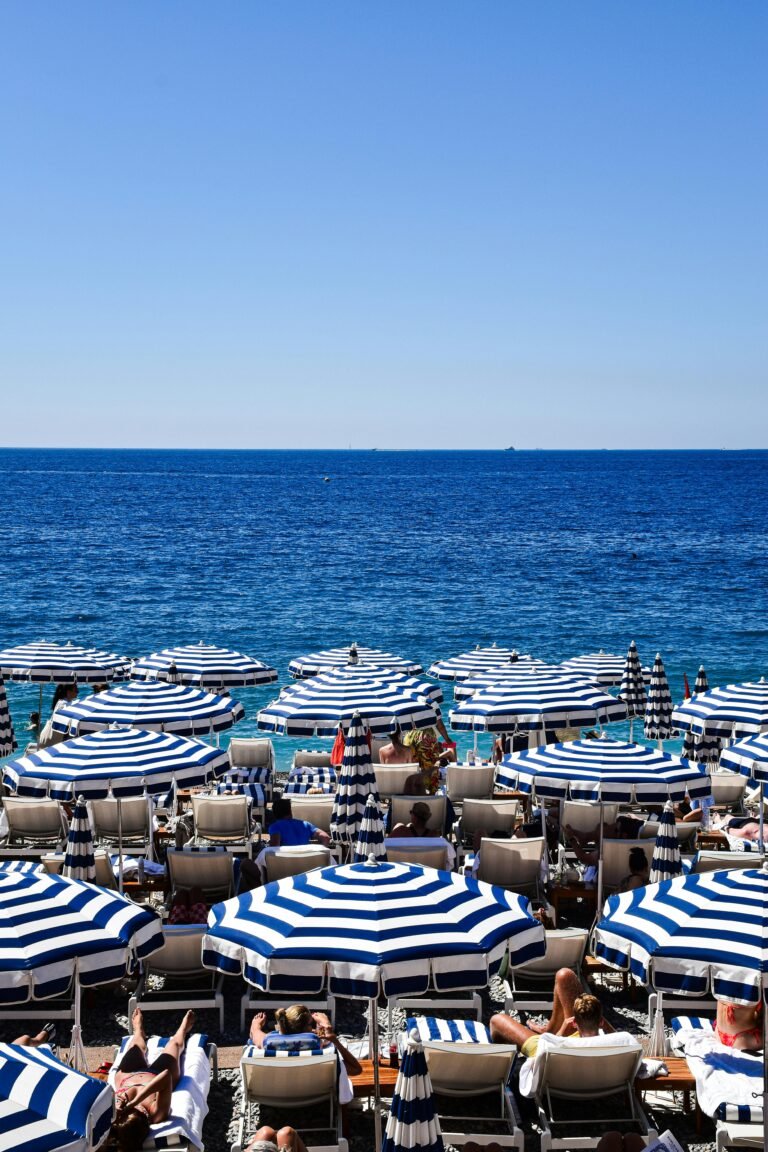The Florida Keys are a stunning coral cay archipelago that stretches off the southern coast of Florida. This group of islands extends 90 miles (150 km) from Miami to Key West, nestled between the Atlantic Ocean and the Gulf of Mexico. Key West is the southernmost point of the continental U.S., located only 93 miles (150 km) from Cuba. The Florida Keys are home to the largest living coral barrier reef in the United States and the fifth largest in the world, which makes it a popular destination for diving and snorkelling enthusiasts.
Among the keys, Key Largo is the northernmost and most significant island, stretching 33 miles (53 km). The archipelago follows an arc, extending from the Florida peninsula, moving south-southwest and westward to Key West, the westernmost inhabited island. While Key West and other islands are inhabited, there are also uninhabited islands like the Dry Tortugas, which are rich in history and natural beauty.
The total land area of the Florida Keys is about 137.3 square miles (356 km²), and most of this lies within Monroe County. According to the 2010 census, the population was 73,090, with an average density of about 532.34 per square mile. By 2020, the population had grown to 82,874, with 32% concentrated in Key West. Suppose you’re planning a trip to this unique destination. In that case, you’ll find many interesting facts to explore, from the Straits that separate the Atlantic Ocean and the Gulf of Mexico to the defining edge of Florida Bay.

How Many Keys Are In The Florida Keys?
If you’ve ever wondered about the Florida Keys, the answer is that there are about 25 primary keys in the area, each with its own story and history. To truly define what a key is, consider it a small island, and the name Florida Keys comes from a long history in Florida. Taking a little trip through this history reveals the meaning behind the name and how the number of keys came to be known over time. The Florida Keys are unique in that they aren’t just islands but also pieces of Florida’s culture and geography, making it a special place to explore.
The Story Behind the Florida Keys
The Florida Keys have a fascinating history that dates back centuries. The first to inhabit these islands were the Native American tribes, the Calusa and Tequesta. In the 16th century, Ponce de Leon, while searching for the Fountain of Youth, arrived in Florida and began exploring the islands. The Spaniards soon charted the area and referred to the islands as “los cayos,” which translates to little island in Spanish. This began the Florida Keys’ connection to the Spanish language and culture.
Over time, Key West became a central point in the area. Initially known as Cayo Huesso, or Bone Island, due to the large amount of bones found by the Spaniards, the name later evolved. English sailors found the name difficult to pronounce, so it became Kay Way-so, which eventually transformed into the familiar name of Key West. The island grew into the largest town in Florida, thanks to its prosperous economy, which was mainly driven by wrecking revenues from ships passing through the area.
The Florida Keys were an essential location for trade, especially with Cuba and the Bahamas, and were situated on the main trade route connecting New Orleans. However, as navigation improved and fewer shipwrecks occurred, Key West began to decline in the late nineteenth century. Despite this, the Florida Keys remain a key part of Florida’s history, culture, and geography, each key holding a unique place in the story of the region.
Total Number of Keys in the Florida Keys
The Florida Keys are home to over 800 keys spread across an expansive archipelago, stretching 120 miles from Key Largo to Key West. What’s cool is that each of these islands has a name, making the Florida Keys even more unique. From the bustling Key West to the more tranquil Key Largo, the islands are all part of this stunning stretch, making it a must-see for anyone visiting the area.

Inhabited Keys in the Florida Keys
The Florida Keys are made up of over 800 named Keys, but not all are inhabited or even reachable by car. Only about 30 of these Keys are inhabited, and even fewer are popular spots for tourists to stay. These primary Keys are some of the most well-known and reachable, with many offering beautiful views, accommodations, and activities for visitors. In the next section, we will go into more detail about these primary Keys, but it’s interesting to note that less than 30 inhabited Keys are accessible to the public in the Florida Keys.
Exploring the Major Keys
When you visit the Florida Keys, there are 30 inhabited Keys, but not all are popular for staying or visiting. There are 10 significant Keys that people typically visit, stretching from north to south. The list includes Key Largo, Tavernier, and Islamorada, a town comprising six Keys! Other notable central Keys include Long Key, Duck Key, and Marathon, a town comprising 10 Keys. Additionally, there are Bahia Honda Key, Big Pine Key, No Name Key, and, of course, the famous Key West. These primary Keys make up the most visited areas of the Florida Keys, and each offers a unique experience for anyone exploring this beautiful region.
Location of the Florida Keys
The Florida Keys are located just south of the Florida peninsula, as shown on the map. To reach the Florida Keys, you will drive through Florida City, the last central town, before entering the Keys. Florida City is just south of Homestead and is a common stop for gas and snacks before starting your drive into the Keys. From Florida City, you’ll drive across “The Stretch”, a local term for the 18-mile section of Highway US1 that connects Florida City to Key Largo. Once you enter Key Largo, you’ll officially be on the famous Overseas Highway, which stretches to Key West. These drives will take you through the stunning scenery of the Florida Keys, one of the most beautiful spots to visit in Florida.


More Facts about the Florida Keys
The Florida Keys are known for their beautiful beaches, crystal-clear waters, and vibrant coral reefs. With over 800 islands, the Keys are a top destination for water sports, fishing, and enjoying unique wildlife.
Distance from Orlando to the Florida Keys
The distance from Orlando to Key West is just under 400 miles, and driving there takes about 6.5 hours. However, if you are heading to Key Largo, the distance is only 300 miles, which takes around 4.5 hours. If you’re planning a more extended trip to Florida, you can easily cover both areas during your journey and enjoy all the Florida Keys offer.
The Largest Key in the Florida Keys
The most significant Key in the Florida Keys is Key Largo, which spans 33 miles, much longer than Key West, which is only 4 miles long. This size makes Key Largo quite impressive, and if you’re planning a trip to the Keys, I highly recommend renting a car, especially if you’re not just visiting Key West. If you stay in the Upper Keys, the main attractions are spread out, and most people make a 30-minute drive from Key Largo to Islamorada to check out the popular spots throughout the Upper Keys.
Population of the Florida Keys
According to the 2000 United States census, the population of the Florida Keys was just under 80,000 people. Around 30% of this population lived in Key West then. If you visit the Keys, you will notice that the rest are much more spread out than Key West. Key West is only 4 miles long and 2 miles wide, with over 25,000 people living there. The rest of the Keys are much less populated, giving them a more relaxed, local vibe that makes them feel different from the busy atmosphere of Key West.
Number of Bridges in the Florida Keys
The Florida Keys are connected by 42 bridges that link the islands together. One of the most famous is the Seven Mile Bridge, which connects Knight’s Key to Little Duck in the Middle Keys. This bridge is part of the route that leads from Marathon to Key West. You’ll cross two bridges when driving, as the modern bridge is next to the old one, which has a fascinating history. In the early 1900s, Henry Flagler sought to extend his Florida East Coast Railway to Key West. Unfortunately, the original bridge was destroyed in 1935 by the strongest hurricane in the United States. The railway was then converted into a roadway, and in 1982, a new bridge was built, replacing the old one. Today, the Old Seven Mile Bridge is a popular spot to bike, walk, and fish in the Middle Keys, or you can take a tram ride on the Pidgeon Key Express to visit the historic Pidgeon Key.


Final Thoughts
The Florida Keys are a unique and beautiful archipelago with a rich history. From Key Largo to Key West, there’s so much to explore. With over 800 islands and 42 bridges connecting them, it’s a place like no other. Whether you enjoy the stunning coral reefs, explore the Old Seven Mile Bridge, or soak in the local vibe, the Florida Keys offer something for everyone. The area’s history, from Henry Flagler to the famous Overseas Highway, makes this destination unique. If you’re looking for a getaway with beauty, adventure, and history, the Florida Keys are a must-visit. You’ll be amazed by the peaceful landscapes and vibrant culture this area holds.
FAQs
1. What are some fun facts about the Florida Keys?
The Florida Keys are home to the largest living coral barrier reef in the United States. Key West is also the southernmost point of the continental U.S., just 93 miles from Cuba!
2. How many primary Keys are in the Florida Keys?
The Florida Keys have 10 main islands, which are the most visited and popular. These include Key Largo, Key West, and other famous islands like Marathon and Islamorada.
3. What are the five primary Keys in Florida?
The five primary Keys in the Florida Keys are Key Largo, Islamorada, Marathon, Big Pine Key, and Key West. These are the most popular and accessible islands, offering a range of attractions and activities.
4. What is a fun fact about Key West Florida?
A fun fact about Key West, Florida, is that it’s the southernmost point of the continental U.S., just 93 miles from Cuba. It’s also famous for its vibrant sunsets and being the home of writer Ernest Hemingway.




